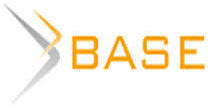COMPARISON OF THE EFFICIENCY OF MACHINE LEARNING ALGORITHMS BY THE EXAMPLE OF FORECASTING THE AVERAGE ELECTRICITY CONSUMPTION OF INTEGRATED CONSUMER METERING DEVICES
Finding and reducing electricity losses is one of the key activities of network organizations to improve financial results. Forecasting based on a large number of criteria and comparing with actual electricity consumption is the preferred way to detect losses. However, this process requires a high degree of automation. Therefore, to solve this problem, this paper considers the use of three machine learning algorithms, as well as a comparison of their effectiveness. The author formed a training sample from the database of one of the districts of electrical networks, and also conducted experiments on the implementation of the following algorithms on it: k-nearest neighbors, linear regression and random forest. To compare the resulting models, the author used such performance indicators as mean square error (MSE), absolute mean error (MAE) and coefficient of determination (R^2). The results of the experiment showed the greatest efficiency of the random forest method in comparison with other considered algorithms.
Korzhavykh V.V. Comparison of the efficiency of machine learning algorithms by the example of forecasting the average electricity consumption of integrated consumer metering devices // Research result. Information technologies. – Т.9, №1, 2024. – P. 58-73. DOI: 10.18413/2518-1092-2024-9-1-0-7
















While nobody left any comments to this publication.
You can be first.
1. Box J. Time series analysis. Forecasting and management / Box J, Jenkins G. M.: Mir, V.1, 1974. – 406 p.
2. Gavrilova T.A. Knowledge bases of intellectual systems. Textbook / Gavrilova T.A., Khoroshevsky V.F. – SPb.: Piter, 2000. – 384 p.
3. Galushkin A.I. Neuromathematics (problems of development) / M.: Radiotekhnika, 2003. 40 p.
4. Donskoy D.A. Application of analytical technologies in control systems and informatics / Donskoy D.A., Sleptsov N.V., Shcherbakov M.A. – Penza, 2005.
5. Zhelezko Yu.S. Calculation, analysis and rationing of the electric power losses in the electric networks / Yu.S. Zhelezko // M.: NU ENAS, 2002. – 280 p.
6. Ivanov V.L. Electronic textbook: knowledge control systems (in Russian) // Informatics and Education. – 2002. – № 1.
7. Kazanskaya A.A. The use of machine learning in investment activity / A.A. Kazanskaya, L.G. Mishura // Scientific Journal of NIU ITMO. Series: Economics and Environmental Management. – 2020. – № 2. – P. 23-34. – DOI: 10.17586/2310-1172-2020-13-2-23-34. – EDN MUJXYZ.
8. Kaftannikov I.L. Problems of training sample formation in machine learning tasks / I.L. Kaftannikov, A.V. Parasich // Vestnik SUSU. Series "Computer technologies, management, radio electronics". – 2016. – Т. 16, № 3. – P. 15-24. DOI: 10.14529/ctcr160302
9. Kudashev K. Commercial electricity losses without borders, 2017. URL: http://www.bigpowernews.ru/interview/document76022.phtml (date of reference: 23.11.2023
10. Find Leakage, 2021 URL: https://www.kommersant.ru/doc/4877601 (date access: 23.11.2023)
11. Fuzzy linear regression in estimation problems / E.V. Vishnyakova, E.V. Ivanova, S.M. Kamalov [et al.] // Scientific Notes of Young Researchers. – 2015. – № 5. – P. 14-29.
12. Jones T. Programming of Artificial Intelligence in Applications / Per. from Engl. Osipov A.I. – M.: DMK Press, 2011. – 312 p.
13. Toady T. Transforming categorical data: A practical guide to handling non-numeric variables for machine learning algorithms, 2023 URL: https://dev-gang.ru/article/preobrazovanie-kategorialnyh-dannyh-prakticzeskoe-rukovodstvo-po-obrabotke-neczislovyh-peremennyh-dlja-algoritmov-mashinnogo-obuczenija-buyh1q4ttt/
14. Tricoz D.V. Neural networks: how to do it? Computers + Programs N 4(5). 1993. – 14-20 p.
15. Flach P. Machine learning / P. Flach // M.: DMK Press, 2015. p. 25
16. Haykin S. Neural networks: a complete course / S. Haykin. – M.: Dialectics, 2019. – 1104 p.
17. Andrzej С. Neural Networks for Optimization and Signal Processing [Text] / C. Andrzej, R. Unbehauen, J. Wiley and Sons Ltd, 1993. – 526 p.
18. Hyndman R.J., Koehler A.B. Another look at measures of forecast accuracy // International Journal of Forecasting. –2006. – № 22(4). – P. 679-688.
19. Shcherbakov M.V., Brebels A. Outliers and anomalies detection based on neural networks forecast procedure: Proceedings of the 31st Annual International Symposium on Forecasting (ISF 2011) / Prague: International Institute of Forecasters, 2011. – pp. 21-22. URL: http://www.forecasters.org/isf/pdfs/ISF11_Proceedings.pdf
20. Yu, Chong Ho. Exploratory data analysis in the context of data mining and resampling // International Journal of Psychological Research. 3. 2010.